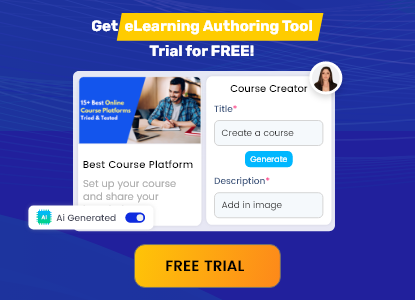In today’s fast-paced corporate training landscape, e-learning has become an indispensable tool for Learning & Development (L&D) professionals. However, despite the best intentions, many organizations fall into costly pitfalls that hinder learning effectiveness, engagement, and ROI. By understanding and addressing these critical e-learning mistakes, L&D professionals can ensure their training programs deliver measurable impact and long-term success.
In this blog, we will explore the three costly e-learning errors all L&D professionals must avoid and how you can implement the right strategies to create high-impact digital learning experiences.
1. Are You Overloading Content Without Engaging Learning Design?
One of the most common mistakes in e-learning development is content overload—where courses are packed with excessive information, leading to cognitive fatigue and disengagement. When learners are bombarded with too much content at once, they struggle to absorb and retain the information effectively. This results in passive learning, where employees merely skim through courses without truly understanding or applying the knowledge.
Why Is This a Costly Mistake?
- Learners struggle to retain vast amounts of information in a single session.
- Overloaded courses reduce engagement, leading to lower completion rates.
- Training investment goes to waste if employees fail to apply what they’ve learned.
How to Fix It:
- Apply Microlearning Strategies – Break down complex topics into bite-sized modules that enhance retention and motivation.
- Leverage Interactive Elements – Utilize gamification, simulations, and scenario-based learning to make training more engaging.
- Use an Authoring Tool – A robust e-learning authoring tool allows you to create interactive, media-rich content that enhances learning without overwhelming users.
- Focus on Learner-Centric Design – Implement spaced repetition, storytelling, and real-world scenarios to improve knowledge retention and application.
2. Is Your E-Learning Lacking Personalization & Adaptability?
A one-size-fits-all training approach often results in disengagement, as learners have varying needs, backgrounds, and learning speeds. Without personalization, employees may feel that the content is irrelevant to their specific job roles, leading to disinterest and poor retention. Additionally, generic learning paths can fail to address skill gaps, making training ineffective in driving real-world competency improvements.
Why Is This a Costly Mistake?
- Generic courses fail to address individual learning gaps.
- Learners may feel disconnected, reducing their motivation to complete the training.
- Companies waste resources on ineffective training that doesn’t yield measurable skill improvement.
How to Fix It:
- Implement Adaptive Learning – Use AI-driven e-learning platforms to tailor courses based on learner progress and competency levels.
- Offer Multiple Learning Paths – Provide learners with various content formats such as videos, podcasts, infographics, and interactive case studies.
- Leverage Data & Analytics – Track learner performance using LMS insights and adjust content based on real-time feedback.
- Incorporate Authoring Tools with Personalization Features – Modern authoring tools allow for customizable learning journeys that align with individual preferences.
3. Are You Ignoring User Experience (UX) & Accessibility?
Poorly designed e-learning platforms can frustrate learners, making it difficult to navigate and absorb content efficiently. A bad UX can lead to high dropout rates, as learners may struggle with confusing layouts, slow loading times, or a lack of intuitive navigation. Additionally, if accessibility is ignored, organizations risk alienating a portion of their workforce, including those with disabilities, limiting the inclusivity and reach of their training programs.
Why Is This a Costly Mistake?
- Confusing navigation reduces engagement and completion rates.
- Inaccessible content limits learning opportunities for diverse users, including those with disabilities.
- A lack of mobile optimization leads to low adoption rates, especially among remote learners.
How to Fix It:
- Optimize for Mobile Learning – Ensure your e-learning content is responsive and accessible on various devices.
- Follow WCAG Accessibility Standards – Make your courses inclusive by incorporating alt-text, closed captions, and screen-reader-friendly designs.
- Enhance UI/UX Design – A simple, intuitive interface improves learner engagement. Use clear layouts, visual hierarchy, and seamless navigation.
- Use Authoring Tools for Responsive Design – Choose an authoring tool that automatically optimizes content across different devices and screen sizes.
Key Takeaways
- Avoid content overload by using microlearning and interactive elements.
- Personalization is key—adapt training programs to individual learner needs.
- Optimize user experience & accessibility to maximize engagement and inclusivity.
- Leverage best e-learning authoring tools to create dynamic, responsive, and effective courses.
Final Thoughts & Next Steps
Avoiding these three costly e-learning mistakes can drastically improve your L&D initiatives and ensure better knowledge retention, engagement, and ROI. Investing in adaptive learning, responsive design, and user-friendly authoring tools will help you create impactful training programs that drive real results.
Ready to transform your e-learning strategy? Explore cutting-edge authoring tools and AI-powered platforms that can help you develop customized, engaging training solutions. Start today and revolutionize the way your workforce learns!
About the author
Olivia Dodd
author
Olivia Dodd is an eLearning strategist at CogniSpark AI, bringing her expertise in operations, performance optimization, and inclusive learning solutions. With a strong background in business development and workforce transformation, she focuses on creating engaging and effective eLearning experiences for organizations worldwide. At CogniSpark AI, Olivia plays a key role in developing innovative learning strategies that align with corporate goals, ensuring seamless integration of technology and instructional design. Her passion for diversity, equity, and inclusion also drives her efforts to build learning solutions that are accessible and impactful for all learners. With years of experience in leadership roles, Olivia has successfully collaborated with global enterprises, enhancing their training programs through cutting-edge eLearning solutions.























